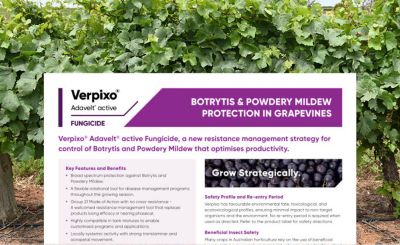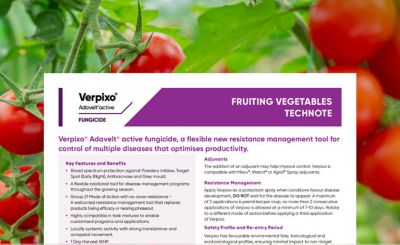“Most growers here use a combination of chemicals and cultural means to reduce botrytis, he said. “Botrytis can win if it keeps raining, but it is important that growers implement a program, a mix of cultural and chemical, and see how they can reduce the damage. That’s what growers hope to do in the tougher seasons.”
“With botrytis you can lose yields and quality. Botrytis produces an enzyme that has an adverse effect on wine quality. Wine makers don't like botrytis so there is a lot of incentive for growers to present their fruit with minimal botrytis.”
He said most years they see diseases such as powdery mildew and botrytis and the ability of Verpixo to control both diseases makes it an attractive option.
“The main reason for choosing Verpixo here would be botrytis but its strong activity on powdery as well is an excellent feature.”
Mr Morrow said most of the botryticides were applied at flowering which was a key time for disease.
“It's often where infection starts. You might not see it for a while - it's what we call a latent infection.”
“Another key timing is that sort of peppercorn size, before you really get coverage issues. That’s also where I would be placing Verpixo. You can spray a bit later with Verpixo (EL31) although coverage at this time is more challenging. A common thing we use when assessing whether to use late season botrytis applications is to spray a few rows of Surround out and actually see what is hitting the bunch. If it's not hitting the bunch, there’s not much value in putting out the product.”
Mr Morrow said the King Valley had warm summer days and cool nights making it an ideal setting for viticulture.
Over the years, traditional varieties such as Cabernet, Shiraz, and Merlot have made way for Italian varieties such as Sangiovese, Barbera, and Prosecco as well as traditional white options.
“The tighter bunch varieties are a bit more prone to disease,” Mr Morrow said. “We have plenty of those with Chardonnay, Sauvignon Blanc, Riesling and Pinot Grigio that are pretty susceptible.”
“Traditionally, white varieties are thinner skinned, but the red ones hang out there longer so are at higher risk as well.”



